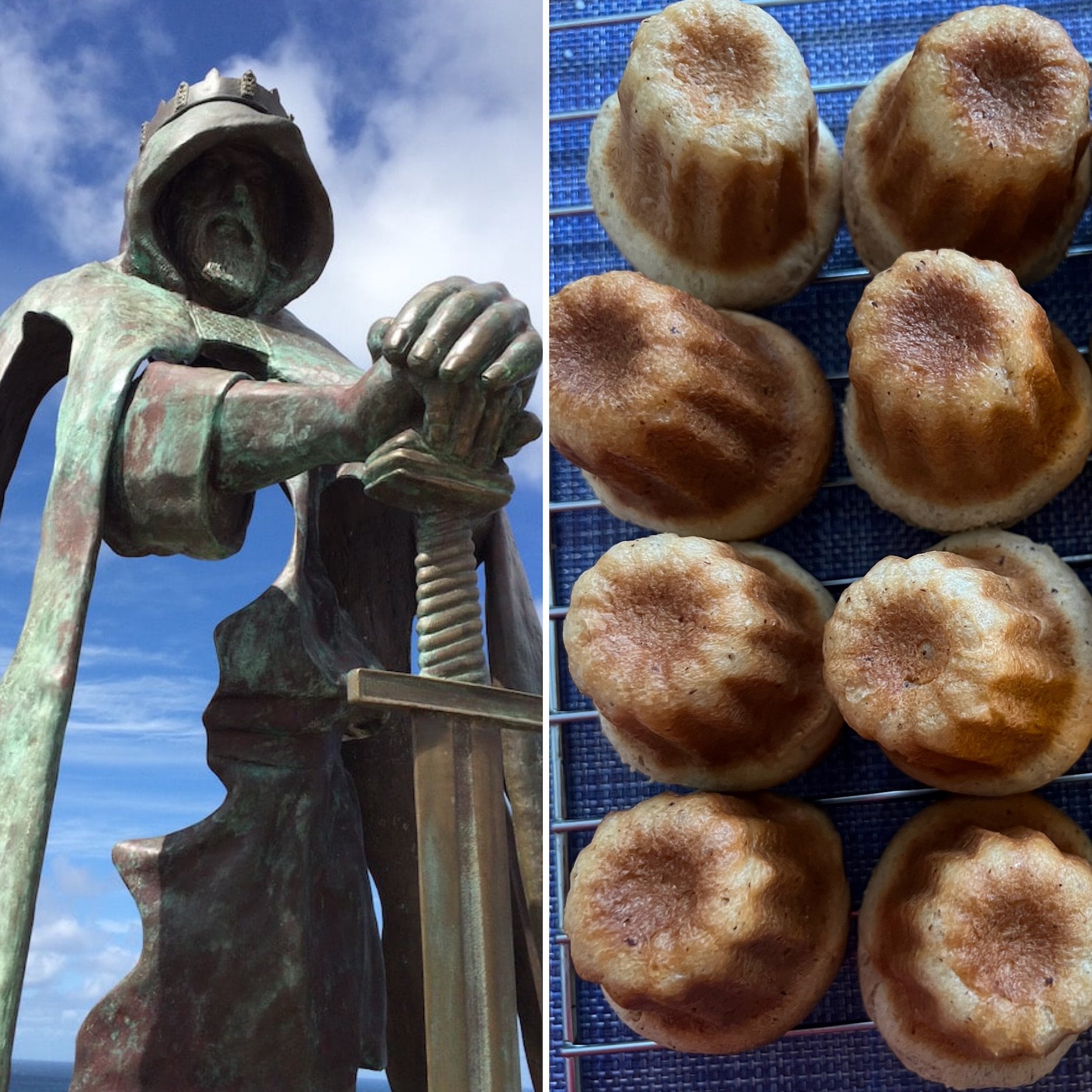Professor Butter Beard and Rubin Eynon’s “Gallos”
“In short, there’s simply not
A more congenial spot
For happily-ever-aftering than here
In Camelot.”
- Alan Jay Lerner
I believe in King Arthur. I always have and always will. And maybe in Merlin even more, but that is another post. I vividly remember curling into my beanbag chair and swirling into dreams while reading “The Once and Future King,” “A Connecticut Yankee in King Arthur's Court,” “The Crystal Cave” and “The Mists of Avalon.” I was best friends with Arthur, inspired by Gawain, seduced by Lancelot, and soulfully formed by Merlin. I continue to always look deep into any morning fog searching for the hidden entrance to Avalon and the welcoming boyhood grin of Arthur.
Joshua Hammer writes for Smithsonian: “A cold wind-driven rain soaks through my parka as I walk across a narrow foot-bridge that links the Cornwall mainland in southwest England to a rocky promontory (Tintagel) overlooking the Bristol Channel. Far below this cantilevered span, waves crash and swirl inside a grotto known as Merlin’s Cave.” After passing through the wooden gate, a winding path leads to ruins of a medieval castle where Richard, the 13th century Earl of Cornwall and the brother of King Henry III, is believed to have gathered with his followers “to feast on mutton and ale and pay homage to a monarch who may never have existed: King Arthur.”
Arthur will be forever connected to Tintagel. In 1136, Geoffrey of Monmouth wrote his “History of the Kings of Britain,” tracing Britain’s history back to its alleged founding by Trojan exiles. He wrote of a sixth-century British king named Uther Pendragon who was determined to seduce the captivating Igraine, wife of a local duke, at her castle in Tintagel. Uther enlisted the wizard Merlin to weave a spell transforming him into the likeness of her husband. “That night she conceived of Arthur, the most famous of men, who subsequently won great renown by his outstanding bravery,” wrote Geoffrey.
Now, a ghostly male figure, cloaked and wearing a crown, clutches his sword as he gazes back across the ruins of Tintagel castle towards the Cornish mainland. The cast bronze figure, standing over eight feel tall, is only partly rendered, with open gaps left within the sculpture through which the viewer can see the cliffs beyond, as if seeing them through the guardian’s soul.
The Welsh sculptor Rubin Eynon creates unforgettable public artwork using a variety of mediums—from wood and stone to iron and bronze. This work, commissioned by English Heritage, is named “Gallos” (Cornish for power), and was unveiled on April 29th, 2016. The artist spent six months designing, sculpting and casting the piece. The final work had to be flown in by helicopter and then carefully placed down into its permanent position forever guarding the peninsula fortress.
“Brilliant, isn’t it?” said Matt Ward, the property manager of the atmospheric peninsula. “I think the visitors are going to love it. Imagine it when a sea mist comes in. It will look amazing.” When the writer for The Guardian pressed Ward on who the statue represents, he became a little more wary. Is it King Arthur? Is that sword Excalibur? “It’s up to you, it’s up to the visitors to decide. You can interpret it how you like.”
This week I dreamt of medieval kings and knights. Of a wizard wandering through his forest and caves. And the majestical glory of Camelot. In my kitchen, I transposed these dreams into castle towers of buttery brioche, constructed with hazelnuts, cinnamon and local honey. A most congenial spot. Perfect for happily-ever-aftering. Forever with Arthur in Camelot.
Cinnamon Hazelnut Brioche
Two Loaves (or however you want to shape it!)
2 cups all-purpose flour
2 cups bread flour
½ cup hazelnut flour (I prefer Bob’s Red Mill)
1 Tbsp ground cinnamon
1 tsp fine sea salt
3 ½ tsp instant yeast
5 large eggs
3 Tbsp local honey
½ cup plain yogurt
2 tsp vanilla paste
Zest of one large orange
18 Tbsp unsalted butter, room temperature
1) In the bowl of a standing mixer, use the paddle to mix the two flours, the hazelnut flour, cinnamon, salt and yeast.
2) In a second bowl, lightly beat the five eggs and then whisk in the honey, yogurt, vanilla and orange zest.
3) Add the egg mixture to the dry mixture. Change to the dough hook and mix on slow speed for two minutes, then on medium for ten minutes to form a soft dough that cleans the sides of the bowl.
4) With the mixer on a medium speed, add the butter, one Tablespoon at a time, until the butter is fully incorporated.
5) Butter a glass bowl and scrape the dough into the bowl. Cover the bowl with plastic wrap and refrigerate the dough overnight.
6) The next morning, scrape the dough onto a lightly floured surface and divide as you wish. This dough will make two loaves. I choose to divide the dough into thirds – one third for a small decorative loaf and the remaining to make twelve individual rolls.
7) Butter the baking tins and place the dough in them. Cover the loaves loosely with plastic wrap and let sit for one to two hours to come to temperature and proof.
8) Preheat your oven to 400 degrees. Bake the loaves for thirty minutes until golden and a skewer comes out clean. Smaller loaves will take less time. My twelve individual rolls baked in fifteen minutes. Let them cool in the pan for five minutes and then cool completely on wire rack – if you can wait that long!


